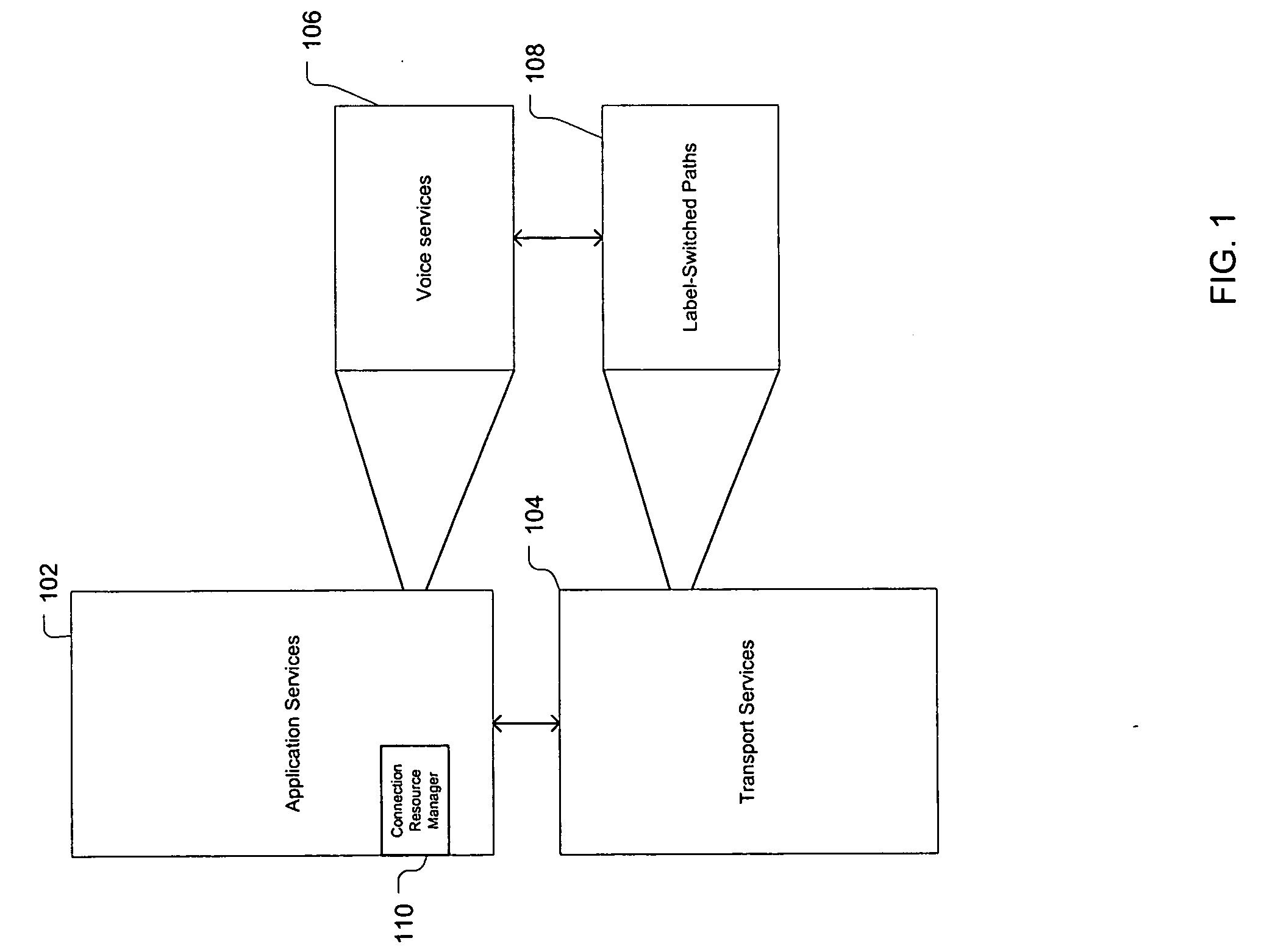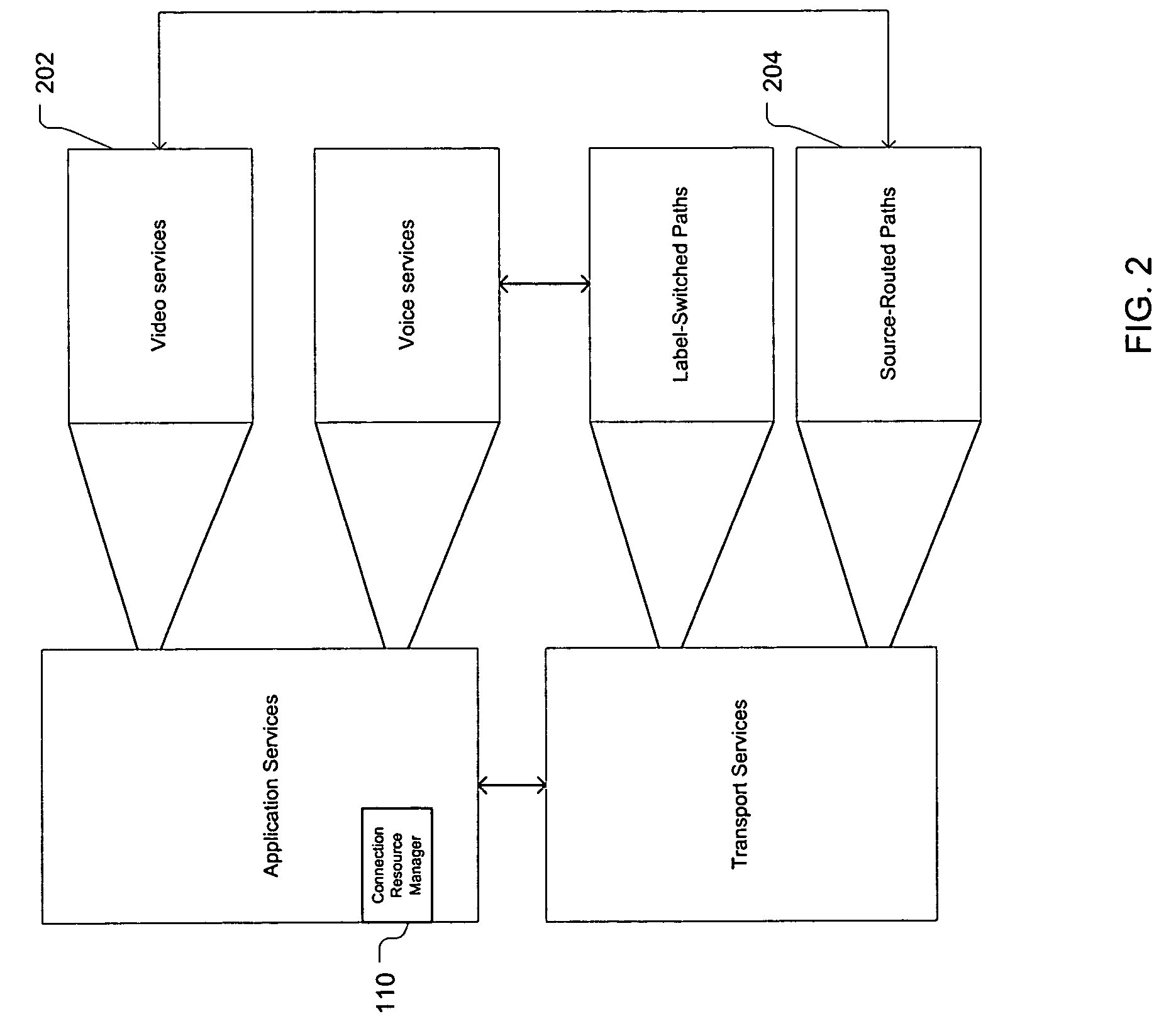Network quality of service management
a network quality and service technology, applied in the field of communication networks, can solve the problems of inability to provide qos guarantees in terms of bounds on delay, jitter and loss, and packet networks, in particular best-effort ip networks, inherently suffer from variable delay, jitter and loss, and achieve efficient and reliable response tim
- Summary
- Abstract
- Description
- Claims
- Application Information
AI Technical Summary
Benefits of technology
Problems solved by technology
Method used
Image
Examples
embodiment 400
[0117] In this embodiment, illustrated by FIG. 4, VTGs are created between all pairs of communicating media gateways to carry packet voice streams. Note that significant flexibility exists in the present invention with regard to VTG creation. For example, multiple VTGs can be created between a given pair of nodes in the network. These VTGs can follow the same path or follow different paths. Since in many applications, VTGs are bidirectional, they are typically provisioned as a pair of half-duplex VTGs, one in each direction. However, in some embodiments, the two half-duplex pairs need not be the same size (bandwidth capacity). They also need not follow the same path. A forward VTG can follow one path and a return VTG could follow a different path. Also, two unidirectional VTGs could potentially be provisioned in one direction while only one is the other direction. This latter variant could support, asymmetrical transport of QoS-sensitive demands such as video-casting, for example. O...
embodiment 900
[0139]FIG. 9 illustrates a hierarchical embodiment 900 of the present invention. As illustrated, the MSWs are divided into three clusters 902, 904, and 906, where each cluster is managed by its own CRM (908, 910, and 912, respectively) at the first level of the hierarchy. Within each cluster, one of the MSWs is designated to be a core MSW (C-MSW) 918. The three C-MSWs 918 (one from each cluster) are themselves interconnected by a set of VTGs 916. The C-MSWs and the VTGs that interconnect them are considered to form the second level of the hierarchy. A level-two CRM (914) is used to manage the level-two VTGs 916. A C-MSW plays a role similar to that of an MSW in the sense that a C-MSW can be hosted by edge routers and use packet-network service-level assurances (SLAs) to create VTGs between them. However, C-MSWs are connected by VTGs in level-two areas. Each C-MSW provides a connectivity point from any MSW in its local level-one area to all other level-one areas. Thus, every MSW in a...
PUM
 Login to View More
Login to View More Abstract
Description
Claims
Application Information
 Login to View More
Login to View More - R&D
- Intellectual Property
- Life Sciences
- Materials
- Tech Scout
- Unparalleled Data Quality
- Higher Quality Content
- 60% Fewer Hallucinations
Browse by: Latest US Patents, China's latest patents, Technical Efficacy Thesaurus, Application Domain, Technology Topic, Popular Technical Reports.
© 2025 PatSnap. All rights reserved.Legal|Privacy policy|Modern Slavery Act Transparency Statement|Sitemap|About US| Contact US: help@patsnap.com



